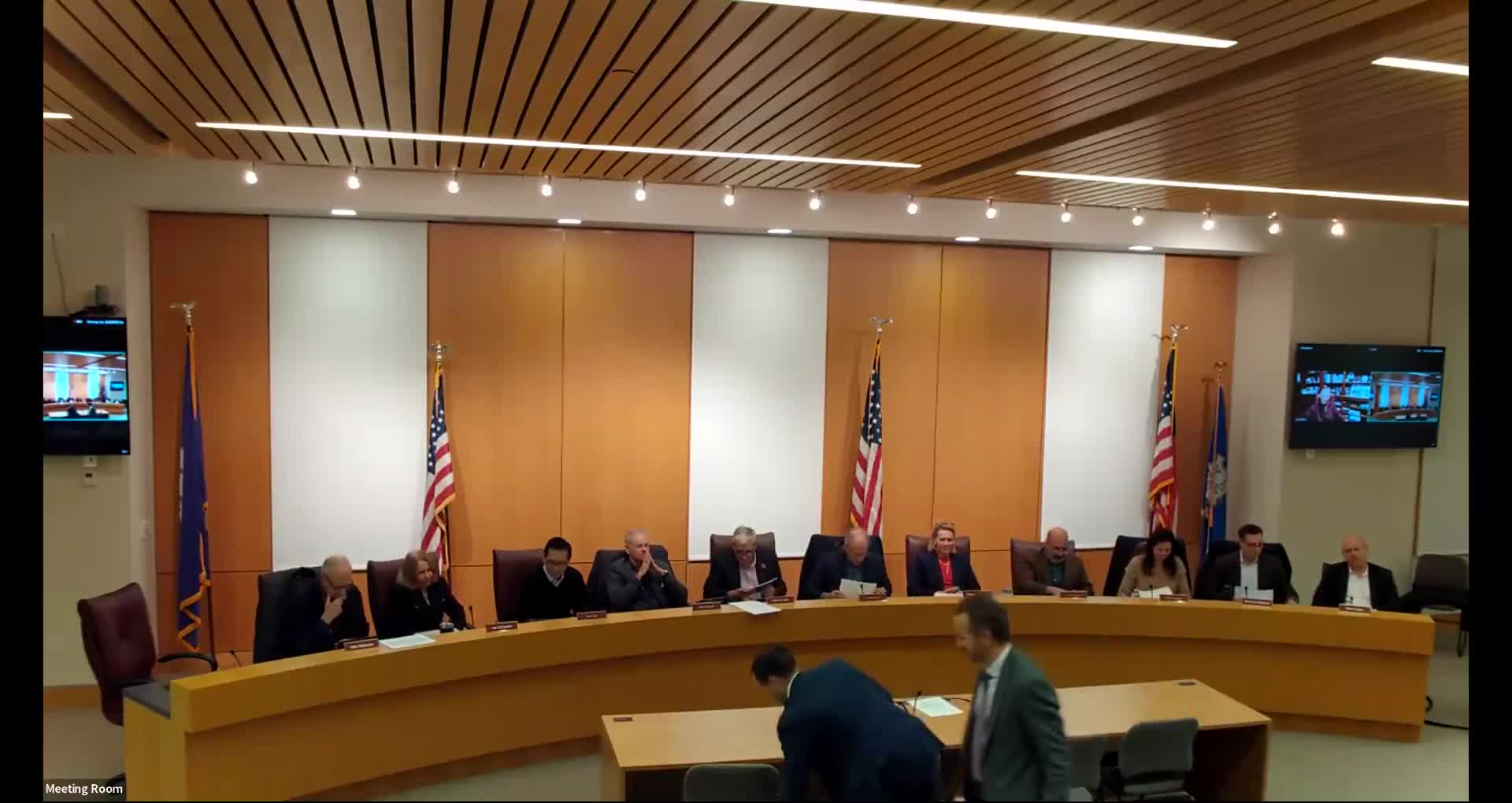New Canaan boards weigh modulars, renovations or a fourth school as kindergarten projections rise
November 12, 2025 | New Canaan, Fairfield, Connecticut
This article was created by AI summarizing key points discussed. AI makes mistakes, so for full details and context, please refer to the video of the full meeting. Please report any errors so we can fix them. Report an error »

Dr. Lutze, the New Canaan superintendent, told the Board of Finance on Nov. 11 that enrollment — especially kindergarten — is the single biggest driver of any decision on school facilities and capital spending.
"Kindergarten is the most difficult grade to project," Dr. Lutze said, explaining the district uses actual birth counts and a five‑year rolling birth‑to‑kindergarten ratio. He described the district’s recent work to open early kindergarten registration and to consult multiple demographers before committing to capital plans.
The district presented three planning scenarios: keep the status quo and use short‑term measures (redistricting, temporary modular classrooms, moving pre‑K offsite where feasible); expand the footprint of existing elementary schools and reconfigure grades to K‑5 with phased renovations; or build a fourth elementary in the North of town and convert existing schools to a K‑5 alignment. "If we budget for 417 kindergarteners, that's a very different number than 288 kindergarteners," Dr. Lutze warned, noting space, furniture and staffing implications.
The presentation explained how the town’s birth counts feed the demographer’s birth‑to‑K ratio. Historical examples cited included 142 births in 2010 that materialized into 285 kindergarten registrants five years later, and an average five‑year birth‑to‑K ratio of about 1.98. The demographer’s one‑year‑out projections have been, on average, within 39 students across 11 years but can vary widely year to year.
Board members pressed on factors not always captured by the district’s primary vendor: housing stock changes, apartment counts and new residences that can alter in‑migration. Realtor and board members noted construction and denser housing can add households; district staff said Nasdaq demographers do not model housing stock and the district has engaged other demographers that consider household and housing trends.
Capacity was framed in terms of sections (homerooms) rather than absolute student counts. The presentation noted elementary buildings are designed around section counts (28 sections K‑4 is a common planning metric); West currently operates about 23 K‑4 sections plus five pre‑K rooms, East runs about 30 sections and South about 26, and the district has converted program spaces into classrooms when needed.
The Board was told Studio Jade’s facilities condition assessment — scheduled for presentation to the Board of Education on Monday — will feed a 10‑year capital plan and educational specifications that will provide cost ranges for each scenario. The board and superintendent agreed the next steps are iterative: review FCA results, develop educational specifications, quantify modular and renovation costs, and then consider a municipal building committee and budget packaging in January and February.
No formal decisions were taken. The meeting record shows the board intends to treat the coming months as an exploratory, step‑by‑step process that could include short‑term modulars to buy time while the district refines projections and cost estimates.
"Kindergarten is the most difficult grade to project," Dr. Lutze said, explaining the district uses actual birth counts and a five‑year rolling birth‑to‑kindergarten ratio. He described the district’s recent work to open early kindergarten registration and to consult multiple demographers before committing to capital plans.
The district presented three planning scenarios: keep the status quo and use short‑term measures (redistricting, temporary modular classrooms, moving pre‑K offsite where feasible); expand the footprint of existing elementary schools and reconfigure grades to K‑5 with phased renovations; or build a fourth elementary in the North of town and convert existing schools to a K‑5 alignment. "If we budget for 417 kindergarteners, that's a very different number than 288 kindergarteners," Dr. Lutze warned, noting space, furniture and staffing implications.
The presentation explained how the town’s birth counts feed the demographer’s birth‑to‑K ratio. Historical examples cited included 142 births in 2010 that materialized into 285 kindergarten registrants five years later, and an average five‑year birth‑to‑K ratio of about 1.98. The demographer’s one‑year‑out projections have been, on average, within 39 students across 11 years but can vary widely year to year.
Board members pressed on factors not always captured by the district’s primary vendor: housing stock changes, apartment counts and new residences that can alter in‑migration. Realtor and board members noted construction and denser housing can add households; district staff said Nasdaq demographers do not model housing stock and the district has engaged other demographers that consider household and housing trends.
Capacity was framed in terms of sections (homerooms) rather than absolute student counts. The presentation noted elementary buildings are designed around section counts (28 sections K‑4 is a common planning metric); West currently operates about 23 K‑4 sections plus five pre‑K rooms, East runs about 30 sections and South about 26, and the district has converted program spaces into classrooms when needed.
The Board was told Studio Jade’s facilities condition assessment — scheduled for presentation to the Board of Education on Monday — will feed a 10‑year capital plan and educational specifications that will provide cost ranges for each scenario. The board and superintendent agreed the next steps are iterative: review FCA results, develop educational specifications, quantify modular and renovation costs, and then consider a municipal building committee and budget packaging in January and February.
No formal decisions were taken. The meeting record shows the board intends to treat the coming months as an exploratory, step‑by‑step process that could include short‑term modulars to buy time while the district refines projections and cost estimates.
View full meeting
This article is based on a recent meeting—watch the full video and explore the complete transcript for deeper insights into the discussion.
View full meeting
